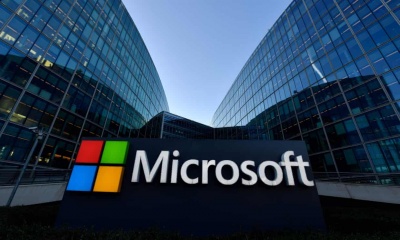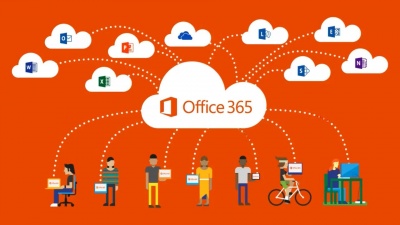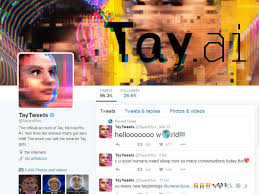Difference between revisions of "Microsoft"
(→Censorship) |
(→Hardware Devices: Started addition of Hardware Devices->Xbox Consoles) |
||
| Line 37: | Line 37: | ||
===Hardware Devices=== | ===Hardware Devices=== | ||
| + | ====Mobile Devices and Tablets==== | ||
In 1996, Microsoft introduced its first mobile device referred to as [https://en.wikipedia.org/wiki/Windows_Embedded_Compact#Releases Windows CE 1.0]. The form factor of these devices was that of a small, portable PC. <ref> Edwards, Benj. (Jan 23, 2021). [https://www.howtogeek.com/703977/what-was-windows-ce-and-why-did-people-use-it/#:~:text=Windows%20CE%201.0%20officially%20launched,and%20the%20LG%20Electronics%20HPC. What Was Windows CE, and Why Did People Use It?] ''How-To Geek'' Retrieved March 26, 2021 </ref> The next iteration of the Microsoft mobile device was the Windows Mobile operating system released in 2000. In 2017, Windows Phones accounted for only 1.3% of the mobile phone market <ref name="cnet">Reilly, Claire. (Oct 8, 2017). [https://www.cnet.com/news/windows-10-mobile-features-hardware-death-sentence-microsoft/ "Windows 10 Mobile gets its final death sentence"] ''CNet''. Retrieved March 16, 2021.</ref> As a result, Microsoft discontinued development of new features for the Windows Mobile operating system. The low percentage of market share for Windows Mobile is attributed to the lack of app development investment from other companies - Microsoft was competing with Apple's iOS and Google's Android, which accounted for 34% and 64% of the mobile operating system market at the time. <ref name="cnet"></ref> | In 1996, Microsoft introduced its first mobile device referred to as [https://en.wikipedia.org/wiki/Windows_Embedded_Compact#Releases Windows CE 1.0]. The form factor of these devices was that of a small, portable PC. <ref> Edwards, Benj. (Jan 23, 2021). [https://www.howtogeek.com/703977/what-was-windows-ce-and-why-did-people-use-it/#:~:text=Windows%20CE%201.0%20officially%20launched,and%20the%20LG%20Electronics%20HPC. What Was Windows CE, and Why Did People Use It?] ''How-To Geek'' Retrieved March 26, 2021 </ref> The next iteration of the Microsoft mobile device was the Windows Mobile operating system released in 2000. In 2017, Windows Phones accounted for only 1.3% of the mobile phone market <ref name="cnet">Reilly, Claire. (Oct 8, 2017). [https://www.cnet.com/news/windows-10-mobile-features-hardware-death-sentence-microsoft/ "Windows 10 Mobile gets its final death sentence"] ''CNet''. Retrieved March 16, 2021.</ref> As a result, Microsoft discontinued development of new features for the Windows Mobile operating system. The low percentage of market share for Windows Mobile is attributed to the lack of app development investment from other companies - Microsoft was competing with Apple's iOS and Google's Android, which accounted for 34% and 64% of the mobile operating system market at the time. <ref name="cnet"></ref> | ||
The first Microsoft Surface tablet was announced in June 2012 at an invitation-only media event in Los Angeles. <ref> Bott, Ed. (Jun 19, 2012). [https://www.zdnet.com/article/microsofts-new-surface-tablets-make-a-solid-first-impression/ "Microsoft's new Surface tablets make a solid first impression"] ''ZdNet''. Retrieved March 12, 2021</ref> | The first Microsoft Surface tablet was announced in June 2012 at an invitation-only media event in Los Angeles. <ref> Bott, Ed. (Jun 19, 2012). [https://www.zdnet.com/article/microsofts-new-surface-tablets-make-a-solid-first-impression/ "Microsoft's new Surface tablets make a solid first impression"] ''ZdNet''. Retrieved March 12, 2021</ref> | ||
| − | The first generation of Xbox was released on November 15, 2001, in North America. It was Microsoft's first foray into the gaming console market. <ref> ''Microsoft''. [https://news.microsoft.com/2001/11/15/xbox-erupts-on-the-scene/ "Xbox Erupts on the Scene"] Retrieved March 26, 2021 </ref> | + | ====Xbox Consoles==== |
| + | The first generation of Xbox was released on November 15, 2001, in North America. It was Microsoft's first foray into the gaming console market and sold over 24 million units. <ref> ''Microsoft''. [https://news.microsoft.com/2001/11/15/xbox-erupts-on-the-scene/ "Xbox Erupts on the Scene"] Retrieved March 26, 2021. </ref> The original intention was for the Xbox, originally called the DirectX Box for its use of the company's [https://en.wikipedia.org/wiki/DirectX DirectX API], to run on Windows 2000. <ref name="xboxhistory"> Gurwin, Gabe. (March 16, 2021). [https://www.digitaltrends.com/gaming/the-history-of-the-xbox/ "The history of the Xbox"] ''Digital Trends''. Retrieved on March 16, 2021.</ref> The Xbox was the first console to come with an Ethernet port to allow internet access, laying the foundation for the online gaming subscription service Xbox Live. <ref name="xboxhistory2"> Thang, Jimmy. (Jun 26, 2017). [https://www.gamespot.com/gallery/the-evolution-of-xbox-consoles/2900-1322/#2 "The Evolution Of Xbox Consoles"] ''Gamespot''. Retrieved April 2, 2021. </ref> On November 22, 2005, Microsoft released two versions of the Xbox 360 selling over 84 million units worldwide. This console became a household entertainment staple for its support of early streaming services, CDs, and DVDs.<ref name="xboxhistory2" /> | ||
| + | // In progress | ||
==Ethics== | ==Ethics== | ||
Revision as of 13:43, 2 April 2021

Microsoft, formally known as Microsoft Corporation (NASDAQ: MSFT), is an American multinational computer technology corporation headquartered in Redmond, Washington. Microsoft is engaged in developing, licensing, and supporting a range of software products and services related to computing. [2] [3] [4] Its products include operating systems for personal computers, servers, phones, and other intelligent devices; server applications, productivity applications; business solution applications; desktop and server management tools; software development tools; video games; and online advertising. Microsoft also provides cloud-based solutions, consulting services, product services, and solution support services [5] As Microsoft continues to expand its products and services, there have been several ethical issues revolving around its business practices and products relating to censorship, privacy, stifling competition, and chatbots.
History
Early Years
Microsoft was founded on April 4th, 1975, in Albuquerque, New Mexico. [5] Inspired by the January cover of Popular Electronics, Harvard dropout Bill Gates and his friend Paul Allen started Micro-Soft(Microsoft) for microprocessors and software - to develop software for the Altair 8800(Early Computer). By the end of 1978, Microsoft's sales topped more than $1 million and in 1979 the business moved its headquarters to Bellevue, Washington, where Gates and Allen grew up. In 1980, the company struck a deal to provide the operating system for IBM's first personal computer. Microsoft then moved on to release Windows in 1985, a year before moving its headquarters to Redmond, Washington. On March 13, 1986, Microsoft went public with an offering price of $21.00 per share. By the late 1980s, Microsoft was the world's largest personal-computer software company. [6] [7]
Product Development in the 1990s
In 1993, Microsoft introduced Encarta, as well as the first version of Windows NT. The following year, Microsoft releases an upgrade called Windows NT 3.5, winning the PC Magazine award for technical excellence. The upgrade boosted sales of NT to more than one million copies and by the end of the year, Microsoft announced an agreement to purchase Intuit. However, the U.S. Department of Justice filed suit to prevent the takeover because of antitrust concerns. Still, Microsoft's revenues exceeded $4 billion in 1994. [8]
In 1995, the company released Windows 95, a redesign of its Windows OS which used the basic design template that it would rely on to this day. That same year Bill Gates outlines Microsoft's commitment to supporting and enhancing the internet with the release of its web browser called Internet Explorer. In 1998, Microsoft released Windows 98 as part of its Windows 9x family of Microsoft Windows operating systems. By early 1999, the company had secured more than 100 licensing agreements with manufacturers. [8] [5] [9]
Products and Services
Main article: List of Microsoft software
Windows
The Windows operating system (Windows OS) is a family of operating systems for personal computers, servers, and mobile devices. It provides a graphical user interface, virtual memory management, multitasking, and support for its devices. [10]
Microsoft offers a variety of accessibility technology and tools for Windows such as vision, hearing, dexterity, mobility, and focus. [11]
Internet Explorer, first bundled with Windows in 1995 as part of the "Microsoft Plus" package, is a free graphical browser maintained by Microsoft for legacy enterprise uses. [12]
Microsoft Edge is a free-of-cost graphical web browser bundled with Windows 10 developed by Microsoft in 2014. [13]

Microsoft Office
Microsoft offers a collection of powerful productivity tools such as Microsoft Word, Excel, PowerPoint, Outlook, and Access all bundled together in Microsoft 365. Inside Microsoft 365, Microsoft offers its users monthly subscription plans for personal, business, education, and government organizations. [15]
Cloud-Based Computing Services
Microsoft Office 365 is an online suite that enables people to stream Microsoft applications and software such as Office, Exchange, SharePoint, and Lync from the cloud. [5]
Xbox LIVE is an online service which enables online gaming, social networking, and access to a wide range of entertainment content such as video games and movies. [5]
Azure is a family of platform and database services that helps developers connect applications and services in the cloud. [5]
Hardware Devices
Mobile Devices and Tablets
In 1996, Microsoft introduced its first mobile device referred to as Windows CE 1.0. The form factor of these devices was that of a small, portable PC. [16] The next iteration of the Microsoft mobile device was the Windows Mobile operating system released in 2000. In 2017, Windows Phones accounted for only 1.3% of the mobile phone market [17] As a result, Microsoft discontinued development of new features for the Windows Mobile operating system. The low percentage of market share for Windows Mobile is attributed to the lack of app development investment from other companies - Microsoft was competing with Apple's iOS and Google's Android, which accounted for 34% and 64% of the mobile operating system market at the time. [17]
The first Microsoft Surface tablet was announced in June 2012 at an invitation-only media event in Los Angeles. [18]
Xbox Consoles
The first generation of Xbox was released on November 15, 2001, in North America. It was Microsoft's first foray into the gaming console market and sold over 24 million units. [19] The original intention was for the Xbox, originally called the DirectX Box for its use of the company's DirectX API, to run on Windows 2000. [20] The Xbox was the first console to come with an Ethernet port to allow internet access, laying the foundation for the online gaming subscription service Xbox Live. [21] On November 22, 2005, Microsoft released two versions of the Xbox 360 selling over 84 million units worldwide. This console became a household entertainment staple for its support of early streaming services, CDs, and DVDs.[21] // In progress
Ethics
Censorship
In May 2005, Microsoft released a software package banning words like "democracy" and "freedom" in China. [22] [23] This software package was built into MSN Spaces, in which Microsoft holds a 50% stake in the company. Users who tried to include such terms in subject lines are warned: "This topic contains forbidden words. Please delete them." A Microsoft spokesman later said that the restrictions were the price the company had to pay to spread the positive benefits of blogs and online messaging. [24]
Privacy
A report from Motherboard revealed that Microsoft hired contractors to listen to audio recordings captured by Xbox consoles in people's homes to improve the functionality of the product. Specifically, the Xbox's voice command features. The audio was supposed to be captured following a voice command like "Xbox", but contractors said that recordings were sometimes triggered and recorded by mistake. [25] [26]
The release of Windows 10 in 2015 also sparked privacy concerns due to its updated privacy policy, which included vast amounts of user data collection and storage including the content of emails and content in private folders. Users who use a Windows 10 device consent to providing this data as a default, but are able to opt out by turning off various capabilities in the twelve sections of privacy settings. [27] Microsoft's data collection practices followed the footsteps of Google and Apple, but faced further criticism due to their vague privacy policy upon release in 2015. [27] In 2019, Microsoft was under investigation in the European Union's privacy regulator due to their data collection practices, which were potentially breaching privacy rules. The Dutch Data Protection Agency and the Irish Data Protection Committee are testing Microsoft's Windows 10 privacy settings to confirm whether Microsoft is collecting more data than is necessary for their company activities, and whether they are breaching Dutch privacy laws. If these activities are confirmed as a breach of privacy laws, Microsoft will be fined four billion dollars. [28]
Stifling Competition
On May 18, 1998, the Justice Department filed antitrust charges against Microsoft. The charges came about in response to Microsoft bundling additional programs into its Operating system. This meant customers who wanted access to Microsoft applications had to purchase the Microsoft Windows operating system as a prerequisite. In addition, Microsoft distributed Internet Explorer to their consumers for free which led to a concentration of the market share. [29]
In the same antitrust case, Microsoft was accused of intentionally making it extremely difficult for competing browsers to attract users because of Microsoft's boot-up and first-screen restrictions. The company was constituting a market monopoly by making it difficult for users to install competing software and simultaneously making it difficult to uninstall the company's browser, Internet Explorer. [29]

Racist Chatbot
In 2016, Microsoft’s Technology and Research division launched an A.I. Twitter chatbot known as Tay. Tay, an acronym for “Thinking About You”, was designed to learn how to converse based on its interactions with users on Twitter for the purposes of researching “conversational A.I.”[31]. The chatbot would use data sent from users on the website to learn new behaviors, phrases, and words to use in its vocabulary to improve its conversational skills.
As a consequence of its design, Tay learned racist, sexist, and other politically incorrect phrases from some users on the website.[32] The chatbot began posting racially and sexually charged tweets publicly on Twitter. According to Ars Technica, previous iterations of the bot have had 40 million interactions without any problem. The bot used a blacklist system to prevent Tay from tweeting about sensitive topics such as policing in the United States. [32]
The chatbot was later taken down by Microsoft to modify and adjust the behavior of Tay. Shortly after, the Microsoft team released a public apology for the inflammatory behavior of the bot and promised to “look to bring Tay back only when (they) are confident (in) better anticipating malicious intent that conflicts with (their) principles and values”.[32] Five days later, Microsoft launched Tay for a second time where it had a less controversial spell. The bot eventually glitched out and went on a recurring loop of tweeting “You are too fast, please take a rest”. The bot was shortly taken down due to this failure and was never brought back. Users can only view Tay’s tweets if they have previously followed her before going private.
References
- ↑ Taylor, Josh. (Sep 29, 2020). "Global Microsoft outage brings down Teams, Office 365 and Outlook" The Guardian. Retrieved March 12, 2021
- ↑ Bellis, Mary. (Jan 10, 2020). "A Short History of Microsoft" ThoughtCo. Retrieved March 11, 2021
- ↑ Cowling, Jon. (Feb 08, 2016). "A Brief History of Microsoft - The Worlds Biggest Software Company" DSP-Explorer. Retrieved March 11, 2021
- ↑ United States Securities and Exchange Commission. "Microsoft Corporation" Form 10-K. 001-37845. Retrieved March 26, 2021
- ↑ 5.0 5.1 5.2 5.3 5.4 5.5 Microsoft. "Business Description" Retrieved March 11, 2021
- ↑ Microsoft. "Microsoft is born" Retrieved March 11, 2021
- ↑ Microsoft. "Frequently Asked Questions" Retrieved March 11, 2021
- ↑ 8.0 8.1 Reference for Business."Microsoft Corporation - Company Profile, Information, Business Description, History, Background Information on Microsoft Corporation" Retrieved March 11, 2021
- ↑ Gibbs, Samuel. (Oct 2, 2014). "From Windows 1 to Windows 10: 29 years of Windows evolution" The Guardian. Retrieved March 26, 2021
- ↑ Beal, Vangie. (Feb 22, 2021). "Windows Operating System History & Versions" Webopedia. Retrieved March 12, 2021
- ↑ Microsoft. "Accessibility support for Windows" Retrieved March 12, 2021
- ↑ MDN Web Docs. "Microsoft Internet Explorer" Retrieved March 12, 2021
- ↑ MDN Web Docs. "Microsoft Edge" Retrieved March 12, 2021
- ↑ appvizer "Microsoft Office 365: Microsoft's cloud-based collaborative suite" Retrieved March 12, 2021
- ↑ Microsoft. "Office Applications Service Description" Retrieved March 12, 2021
- ↑ Edwards, Benj. (Jan 23, 2021). What Was Windows CE, and Why Did People Use It? How-To Geek Retrieved March 26, 2021
- ↑ 17.0 17.1 Reilly, Claire. (Oct 8, 2017). "Windows 10 Mobile gets its final death sentence" CNet. Retrieved March 16, 2021.
- ↑ Bott, Ed. (Jun 19, 2012). "Microsoft's new Surface tablets make a solid first impression" ZdNet. Retrieved March 12, 2021
- ↑ Microsoft. "Xbox Erupts on the Scene" Retrieved March 26, 2021.
- ↑ Gurwin, Gabe. (March 16, 2021). "The history of the Xbox" Digital Trends. Retrieved on March 16, 2021.
- ↑ 21.0 21.1 Thang, Jimmy. (Jun 26, 2017). "The Evolution Of Xbox Consoles" Gamespot. Retrieved April 2, 2021.
- ↑ Human Rights Watch. (Aug 6, 2006). "Race to the Bottom: Corporate Complicity in Chinese Internet Censorship" Retrieved March 12, 2021
- ↑ CHINA'S CENSORSHIP OF THE INTERNET AND SOCIAL MEDIA: THE HUMAN TOLL AND TRADE IMPACT. 112 Congress. p.1(2011). "(Opening statement of Hon. Chris Smith)" Retrieved March 26, 2021
- ↑ Watts, Jonathan. (Jun 15, 2005). "Microsoft helps China to censor bloggers" The Guardian. Retrieved March 12, 2021
- ↑ Cox, Joseph. (Aug 21, 2019). "Microsoft Contractors Listened to Xbox Owners in Their Homes" Vice. Retrieved March 12, 2021
- ↑ Welch, Chris. (Aug 21, 2019). "Microsoft contractors have listened to voice recordings from the Xbox One" The Verge. Retrieved March 26, 2021
- ↑ 27.0 27.1 Auerbach, David. (Aug 3, 2015). "Broken Windows Theory: Microsoft’s Windows 10 is a privacy nightmare. Here’s how to protect yourself." Slate. Retrieved March 16, 2021
- ↑ Winder, Davey. (Aug 28, 2019). "Microsoft Confirms Windows 10 Privacy Investigation With A $4 Billion Sting" Forbes. Retrieved March 16, 2021.
- ↑ 29.0 29.1 "U.S. V. MICROSOFT CORP." Civil Action No.98-1232 (May 18, 1998). Retrieved March 26, 2021
- ↑ Tung, Liam. (Mar 24, 2016). "Microsoft's Tay AI chatbot goes offline after being taught to be a racist" ZdNet. Retrieved March 19, 2021
- ↑ Vincent, James. (Mar 24, 2016). "Twitter taught Microsoft’s AI chatbot to be a racist asshole in less than a day" The Verge. Retrieved March 19, 2021
- ↑ 32.0 32.1 32.2 Staff, Ars. (Mar 25, 2016). "Tay, the neo-Nazi millennial chatbot, gets autopsied" ARS Technica. Retrieved March 19, 2021